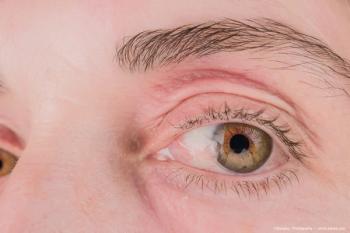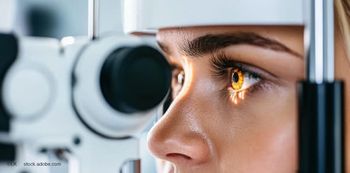
IOL calculations after refractive surgery need extra care
Miami—When determining IOL calculations after refractive surgery, surgeons can take a few steps to avoid any pseudophakic refractive surprises, according to Terence O'Brien, MD.
Miami-When determining IOL calculations after refractive surgery, surgeons can take a few steps to avoid any pseudophakic refractive surprises, according to Terence O'Brien, MD.
Importantly, he advised making certain that the patient's expectations are realistic and that the refraction is stable in addition to discussing the desired target refraction. He also urged performing corneal topography in every patient for irregular astigmatism and corneal asphericity, using more than one third-generation formula, and selecting the highest value for the implant.
The topic of IOL implantation after refractive surgery and power calculations arose a few years ago. However, Dr. O'Brien noted that now this situation is arising on a daily basis in practices as the number of refractive procedures increases each year and as the population ages.
The problem, he pointed out, is that the patients who have undergone refractive surgery and then develop cataract are different in mindset from the traditional patient with cataract in that they have extraordinarily high expectations; they want immediate results; and they want no surgical discomfort, sutures, or downtime after the procedure.
"These patients who develop cataract after refractive surgery want a perfect outcome. They are potentially frustrated and angry because their quality of vision has suffered as the result of the refractive surgery, and the results may be unpredictable. Interestingly, incorrect power is the most common reason for IOL explantation. This is the result of our not being able to determine the power as accurately as we would like," he stated and advised exercising extra care with these patients.
"I think surgeons need to look at the endothelial layer using confocal microscopy or specular microscopy, especially in patients who have had a large ablation," he said.
The pachymetry in the central cornea, he explained, is the big problem. One of the most helpful measures is to use a direct ophthalmoscope set on +4 or +6 and examine the quality of the optics in a dilated pupil. If very irregular changes are present, the patient would likely have problems after IOL implantation. Dr. O'Brien also suggested that using a retinoscope can also pick up some irregularities that cannot be compensated for by cataract surgery and IOL implantation. Despite improvements in corneal topography, determining the corneal power and that of the IOL is difficult, he said.
"Keratometry, either manual or automated, is the mainstay of assessing keratometric diopters as a function of the central corneal power. Corneal topographic analysis has improved, but be careful if using the simulated K readings because the best data may not be obtained. The average corneal power is another useful tool," he said.
Least accurate method
The problems with manual keratometry arise because only four points on an annulus are being assessed, 3 to 4 mm apart in two hexagonal meridians in the paracentral cornea. This assumes, he explained, that spherocylindrical optics are present, which is not the case after the cornea has been changed by laser refractive surgery. Manual keratometry then is the least accurate method.
"In effect, we have a central scotoma and we are not able to measure accurately how flat the central cornea is. There are many sources of error in keratometry and the biggest after refractive surgery are that the cornea has gone from prolate to oblate, the corneal asphericity has been altered, and the range of the central powers has increased," Dr. O'Brien said.
There are also problems with measuring the posterior corneal power. According to Dr. O'Brien, topography may not accurately measure the posterior cornea power. Yet another problem is that the "standardized" corneal index of refraction, which is an estimate of the anterior/posterior powers, changes after ablation procedures, such that after PRK and LASIK the refractive index is less than the standardized value. PRK and LASIK change the relative and the actual thickness of the corneal epithelium and the stromal components; each layer has a separate refractive index.
Newsletter
Don’t miss out—get Ophthalmology Times updates on the latest clinical advancements and expert interviews, straight to your inbox.













































.png)


